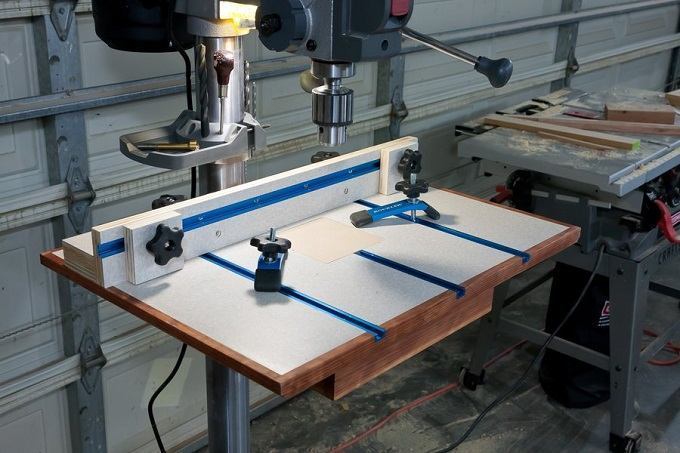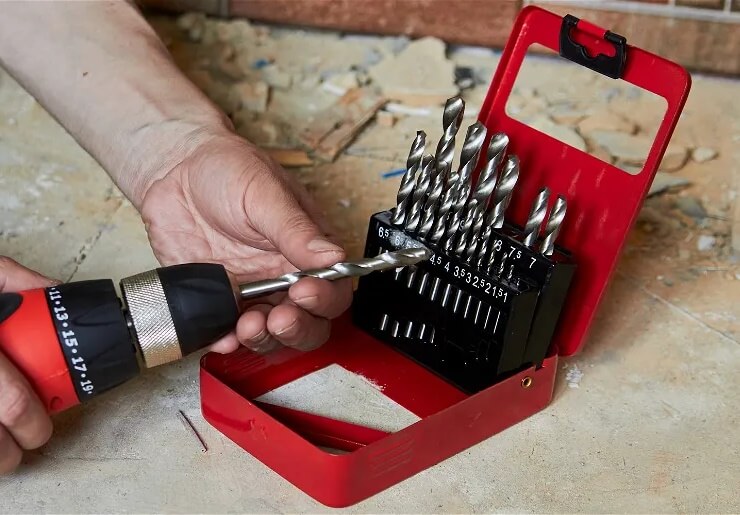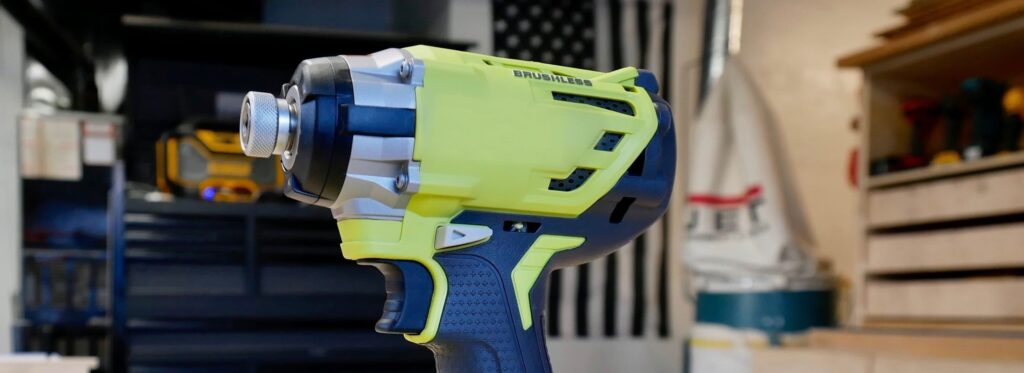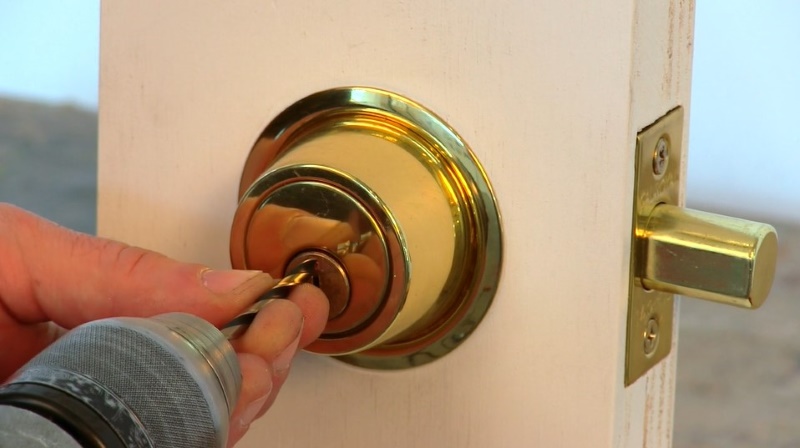A toolbox is a DIYer’s and even a professional handyman’s greatest treasure mainly because the tools inside allow them to make and repair whatever they want. However, the box doesn’t come equipped with the right gear. Instead, you need to pick and choose what equipment to buy and put in it.
To this end, the screw gun vs drill discussion or debate is certainly one worth having, as, in some people’s eyes, they have almost the same functions. In comparing the two, we delve into whether there are any differences and advise you on which option is better for you.
The screw gun Trusted Source Screw gun - Wikipedia A screw gun is similar to a power drill, but designed specifically for driving screws. It automatically feeds screws from a clip, similarly to how nail guns feed nails. en.wikipedia.org is a hand power tool, so they have that in common with the drill. However, true to its name, it was designed to drive screws into various surfaces. Designwise, you may not be able to tell a drill and a screw gun apart, especially if you haven’t seen either type of machine before. However, there are some functional differences in the way the machines work and in their motors.
Due to its primary function, the screw gun is the go-to tool for when you want to install drywall. This is because you can’t drill too far or too little into the drywall. If you drill too little, the protruding screw head will be a problem. Contrastingly, if you drill too far into the drywall, you compromise its holding strength.
That leaves you with a small window to get the positioning of the screw right. The screw gun is capable of giving you this continually since you can set the drill depth. Also, since some of these power tools automatically feed screws from a clip, they make your work much faster and easier.
The machine’s speed is adjustable, and to control it, you only need to apply more or less pressure to the trigger. However, it’s not very versatile and, as such, is not used for much else.
Someone could argue that it has capabilities to drill holes which makes buying a drill redundant. After all, you can drive the screw in, and when you take it out, you leave a hole. Admittedly, this claim is technically true. However, as we’ve stated below in the section about drills, making holes is rarely ever that simple for both DIYers and professionals.
Also, according to reviewers and experts who’ve tried different screw-guns, the DEWALT 20V DCF620B is one highly reliable machine that works well for most drywalling jobs. The LED light in this screw gun might also help you put the screws in the right position.
The screws on a screw gun are often loaded in a clip that allows them to be auto-fed to the machine’s nose. Once you press the gun’s nose onto a surface while simultaneously pressing the trigger, the clutch and motor will engage. The motor will rotate the screw and feed it into the drywall.
When the screw reaches the set depth, the machine cuts the motor and stops the motion. This is how you get consistent results in your drywall. That said, it does need an energy source to provide power to the motor.
The screw gun should be the go-to tool when setting up drywall since you might need to drive in thousands of screws without messing up the depth. It also saves you reload times, and you won’t need to waste time handling each screw.
The drill is different from the screw gun in that it may have a reciprocating hammer or rotating tip on its front end. These tips make holes in walls, wood, and other surfaces. Also, they use a variety of drill bits that you can choose from depending on the intended result.
Notably, it’s almost impossible to control the size of the hole with a screw gun. However, with a drill and the right bit, it becomes easy as pie. However, the gun does have the drill beat when it comes to setting the depth.
Consequently, in situations where the depth of the screw is important, the drill is a much more risky device to use. In most people’s eyes, the drill bit is the better tool to own since it is more versatile than its counterpart. You can even use it for drywalling if you have the right skills and enough patience to do it over an extended period.
Also, most drills come with lower motor speeds that are helpful when driving screws into a surface. This can help prevent over-tightening of any screws and fasteners you come across and want to use.
However, despite the motor speed being slower than the one on the screw gun, the torque is higher, and it is much easier to damage the working surface with a drill.
Notably, BLACK+DECKER remains a popular name where power tools are concerned, and their LD120VA cordless drill with a 24-position is excellent at preventing stripping. It also comes with various drill bits for a variety of jobs.
The essential parts of the drill include the chuck, clutch, motor, and a power source. As for the power source, it could either be a wire connection to a socket or a battery. Users need to select the right drill bit from the options provided and attach it to the chuck.
If the power is connected, they can pull the trigger, and that will engage the motor and provide the energy to drill holes into plastic, wood, and other surfaces. In most modern drills, you can play with controls on the machine to adjust the torque. As such, you might want to account for the type of material you’re drilling into before dialing down the settings.
To call the drill a jack of all trades would not be untrue. It is almost a requirement in any professional’s toolbox and will help the average DIYer complete most of their projects. However, it’s worth noting that it’s not considered the best option for any one job.
If you decide on the drill after considering the drywall screw gun vs hammer drill pros and cons, you will then need to think about what’s better between a brushed and brushless machine. The brushed option is older technology and thus less efficient. It also doesn’t have the longest life expectancy.
On the other hand, brushless motors have so much going for them, including more power, more control, less heat, and the icing on the cake is longer-lasting batteries. However, there is a cost in terms of higher pricing for the brushless power drill.
When considering corded vs cordless drills there are benefits and downsides to both. Corded options are for heavy-duty drilling in walls, wood and more. They also don’t have a clutch and thus have no mechanism to prevent stripping of fasteners and screws. As such, messing up with one of these machines is easy.
The cordless option, on the other hand, helps to prevent users from stripping fastener heads or driving them through the work surface. This is because it has a clutch that disengages the drive train when the torque is too high. That said, the cordless option can still drill holes in surfaces if need be.
Also, let’s not forget the biggest distinction of all: the cordless option uses batteries and needs to be recharged periodically, while the corded option just needs a nearby socket to work. This makes the cordless pick easier to carry around and use daily.
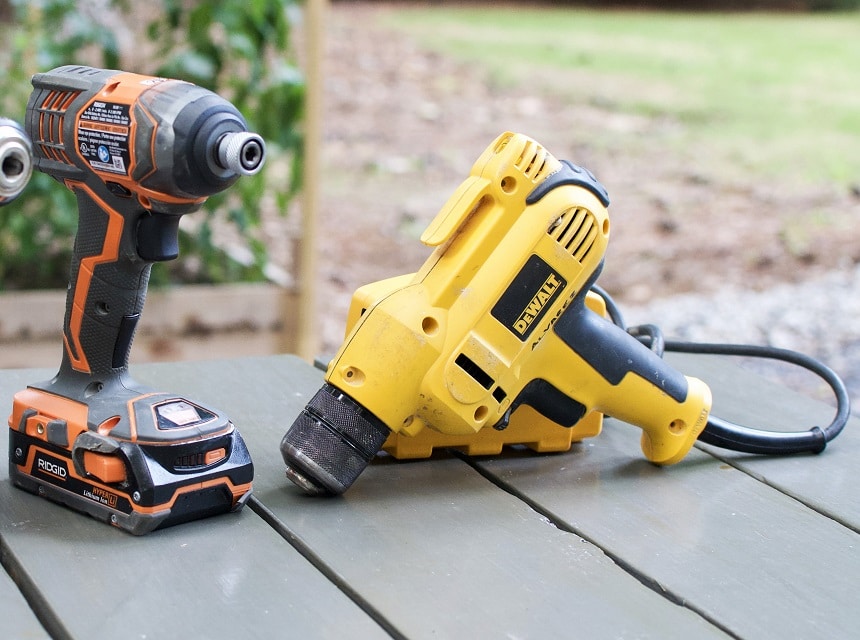
You can also see the side-by-side impact screw gun vs hammer drill comparison below to help you come to a conclusion on the two machine options.
The machines in question both have their uses, although they have some similarities. The overall designs, for instance, are similar in terms of the motors, battery compartments, and triggers. Additionally, it seems they can both be used to drive screws through surfaces. That said, one of them is more effective than the other in this task.
| Screw gun | Drill | |
| Functions and uses | Driving screws through surfaces | Drilling holes, Driving screws and fasteners through various surfaces |
| Versatility | Used mainly for drywall application | Versatile |
| Durability | Durable | Durable |
| Price | Tend to be more expensive | Are the cheaper option |
As a DIYer who probably won’t need to do a lot of drywalling, we recommend the drill. It is versatile, and you can likely use it to drive in screws as well. You just need a little finesse for the task. There’s also no rule against getting a screw gun if you want one.
For the professional, we recommend having both tools. The drill is invaluable in your toolbox, thanks to its versatility. On the other hand, you need professional results when you’re drywalling as well. The screw gun will help you save time and streamline the process.
Both options in the screw gun vs drill debate are excellent power tools that can make your work easier, whether you’re doing it professionally or for fun. In fact, we recommend that you get both if you have the funds. After all, they are designed for different functions. If not, you can check on your immediate needs and fulfil them first. The data above should help you do that.
